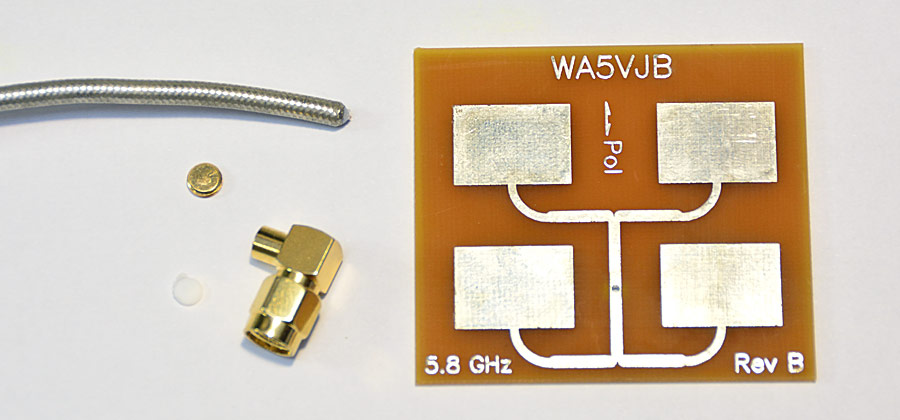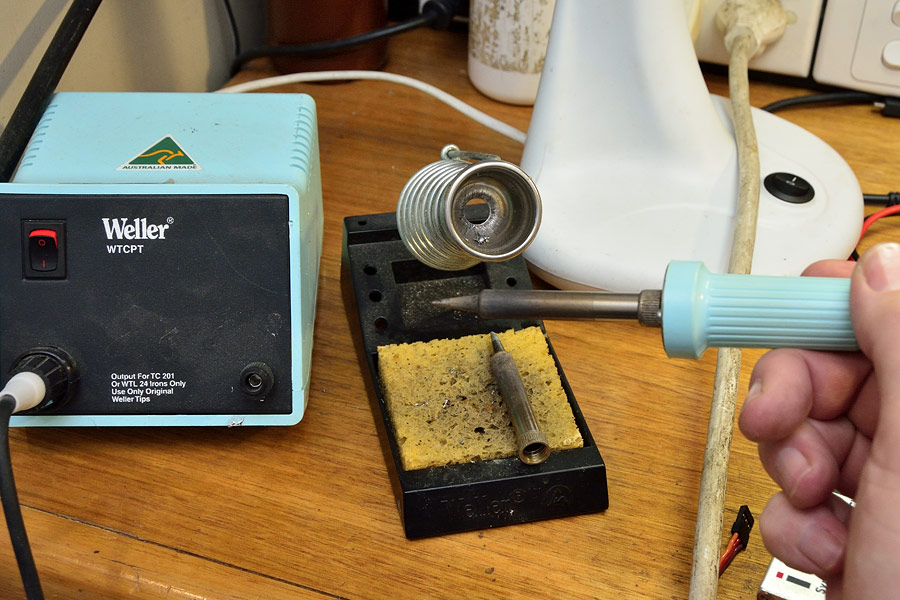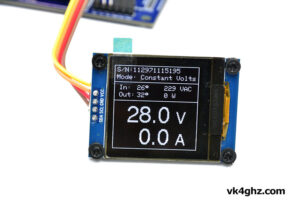
These 5.8 GHz PCB patch antennas come from Kent Electronics in Texas, USA.


You can download the product PDF from here.
The quad patch array (pictured above) offers 11 – 12dBi gain, or 8.8 – 9.8 dB gain over a (unity gain) dipole.
To put that into a simplistic terms, is almost 10 times better than your dipole.
Along with some UT141 semi-rigid hardline coaxial cable, and a right-angle SMA (m) connector, both from RF Supplier in Shenzhen, China, a low-cost patch antenna can be made for multirotor FPV use.
Another handy store for connectors and coax in Brisbane is The RF Shop, located in Oxley.
RF Shop is more expensive than a Chinese online store, (and most of their product is better quality, from Taiwan), and operates out of a home, but give them a call first, as they don’t mind if you drop in and pay & pick up.
First step, prepare one end of the 141 to be soldered to the SMA (m) connector.
Working with 141 and SMAs is almost idiot proof.
141 has a teflon dielectric, so unlike RG58 type cable for CB or ham use, won’t deform/melt with abuse from a soldering iron!
Start by preparing one end to suit soldering to the SMA (m) R/A connector.,
Score the outer sheath with a blade, as you rotate the coax (being careful not to cut into the dielectric):

Using pliers, twist and pull off the outer sheath, like so:
(I’m cheating, using a picture from further down)

Coax end prepared, ready to solder to R/A SMA (m) connector:

Coax inner soldered to centre pin:

Add fillet of solder around outer sheath/connector body:

End cap screwed on:
Terminated!

A nominal length of coax is chosen:

Sorry Americans, in millimetres… about time you adopted the metric system, like everywhere else! 😉
By the way, nothing fancy in the soldering department… just a bog standard Weller:

Coax end prepared, ready to solder to PCB:

Coax soldered to the PCB antenna:

Note the fillet of solder that runs along the coax (on both sides), fastening the outer sheath to the ground plane of the PCB.
Installed on the rear of the 5.8 GHz diversity receiver/monitor, set up for horizontal polarisation:

A dual patch antenna was constructed as well.
Same procedure:


Also on hand is a short in-line flexible “adapter”, with a male SMA at one end, a 30mm length of 141, and a female SMA, should a small angle be required:

As all hams operating on the microwave bands know, when dealing with SMAs, a 5/16″ spanner is always a handy tool to have:

Super Cheap Auto often have a bargain $1 bin on various size spanners.
Have a look for a 5/16″ next time you’re in SCA.











